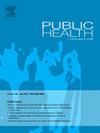亚太区域19个国家1994-2022年生殖、孕产妇、新生儿和儿童健康干预措施覆盖范围的财富不平等现象
IF 3.2
3区 医学
Q1 PUBLIC, ENVIRONMENTAL & OCCUPATIONAL HEALTH
引用次数: 0
摘要
目标自千禧年以来,亚太地区低收入和中等收入国家在生殖、孕产妇、新生儿和儿童健康(RMNCH)方面取得了重大进展。然而,一些国家和人口仍然落后,面临着高死亡率和无法充分获得基本保健服务的问题。这些差距突出表明迫切需要加强服务覆盖面,特别是对未接触到的弱势群体。我们分析了该地区低收入和中等收入国家RMNCH干预措施中基于财富的不平等,并评估了消除这种不平等后覆盖面的增加情况。研究设计重复横断面研究。方法利用来自世卫组织卫生不平等数据存储库的数据(来自人口与健康调查和多指标聚类调查),我们分析了8项基本RMNCH干预措施的综合覆盖指数(CCI),并使用绝对和相对不平等措施(差异、比率、斜率和相对不平等指数)分类数据来评估国家和财富五分位数特定覆盖率和不平等的最新情况和时间趋势。我们进一步研究了各国的不平等水平和趋势,对照其国家RMNCH覆盖水平。最后,我们计算了影响指标,包括人口归因风险和比例,以调查消除基于财富的不平等对国家覆盖水平的潜在影响。结果RMNCH CCI中基于财富的不平等现象普遍存在,最富有的五分之一通常比最贫穷的五分之一覆盖率高得多。然而,各国在基于财富的不平等程度和模式方面的情况好坏参半。观察到不同的模式,包括顶层和底层不平等分布以及随时间变化的轨迹,突出了重要的国家具体情况。虽然随着时间的推移,各国的不平等现象有所减少,但在少数国家,覆盖面的差距扩大了。平等程度的提高主要是随着全国平均覆盖率的提高而发生的。通过消除最富有的五分之一和其余五分之一的覆盖率之间的差异,可以显著提高全国平均CCI。结论消除不平等现象可以推动亚太地区RMNCH服务覆盖率的大幅提高。各国基于财富的不平等模式可以指导针对未接触到的弱势群体的政策干预。本文章由计算机程序翻译,如有差异,请以英文原文为准。
Wealth-based inequalities in the coverage of reproductive, maternal, newborn and child health interventions in 19 countries of the Asia-Pacific region, 1994–2022
Objectives
Low- and middle-income countries in the Asia-Pacific region have experienced major health gains in reproductive, maternal, newborn, and child health (RMNCH) since the turn of the millennium. However, some countries and populations remain behind, facing high mortality rates and inadequate access to essential health services. These gaps highlight the urgent need to strengthen service coverage, particularly for unreached and disadvantaged populations. We analyse wealth-based inequalities in RMNCH interventions in this region's low- and middle-income countries and assess coverage gains if such inequalities were eliminated.
Study design
Repeated cross-sectional study.
Methods
Using data from the WHO Health Inequalities Data Repository derived from Demographic and Health Surveys and Multiple Indicator Cluster Surveys we analysed a composite coverage index (CCI) on eight essential RMNCH interventions, disaggregated data were used to assess the latest situation and time trends of national and wealth quintile-specific coverage rates and inequalities using absolute and relative inequality measures (difference, ratio, and slope and relative index of inequality). We further examined countries’ levels and trends in inequalities against their national RMNCH coverage levels. Finally, we calculated impact measures, including the population attributable risk and fraction, to investigate the potential impact on national coverage levels if wealth-based inequalities were eliminated.
Results
Wealth-based inequalities in the RMNCH CCI are prevalent, with the richest quintiles generally having much higher coverage than the poorest. However, countries presented a mixed picture regarding the levels and patterns of wealth-based inequalities. Distinct patterns were observed, including top and bottom inequality distributions and varying trajectories over time, highlighting important country-specific contexts. While countries have seen declines in inequalities over time, in a few countries, gaps in coverage widened. Gains in equality mostly occurred along increased levels of national average coverage. Significant gains in national average CCI could be made by eliminating differences between the coverage in the richest quintile and the rest.
Conclusions
Eliminating inequalities could drive substantial gains in coverage of RMNCH services across the Asia-Pacific region. Countries’ wealth-based inequality patterns can guide policy interventions targeted at unreached and disadvantaged populations.
求助全文
通过发布文献求助,成功后即可免费获取论文全文。
去求助
来源期刊

Public Health
医学-公共卫生、环境卫生与职业卫生
CiteScore
7.60
自引率
0.00%
发文量
280
审稿时长
37 days
期刊介绍:
Public Health is an international, multidisciplinary peer-reviewed journal. It publishes original papers, reviews and short reports on all aspects of the science, philosophy, and practice of public health.
 求助内容:
求助内容: 应助结果提醒方式:
应助结果提醒方式:


